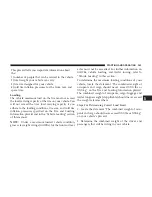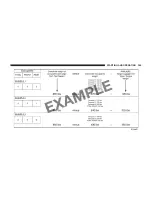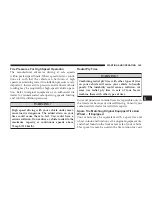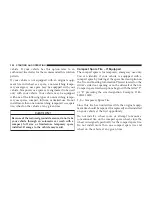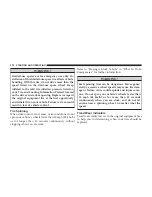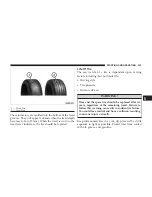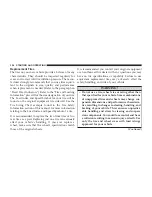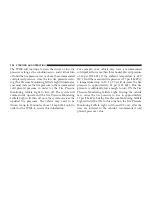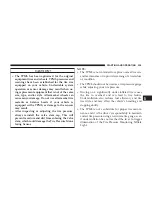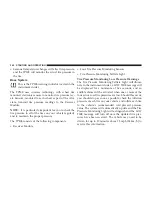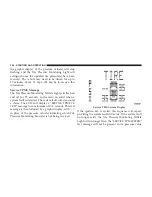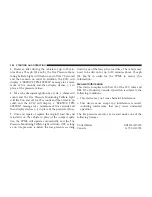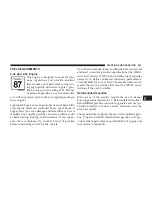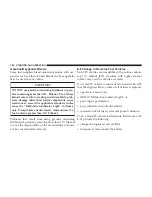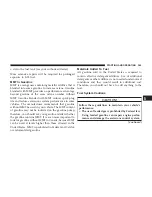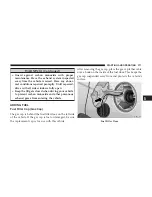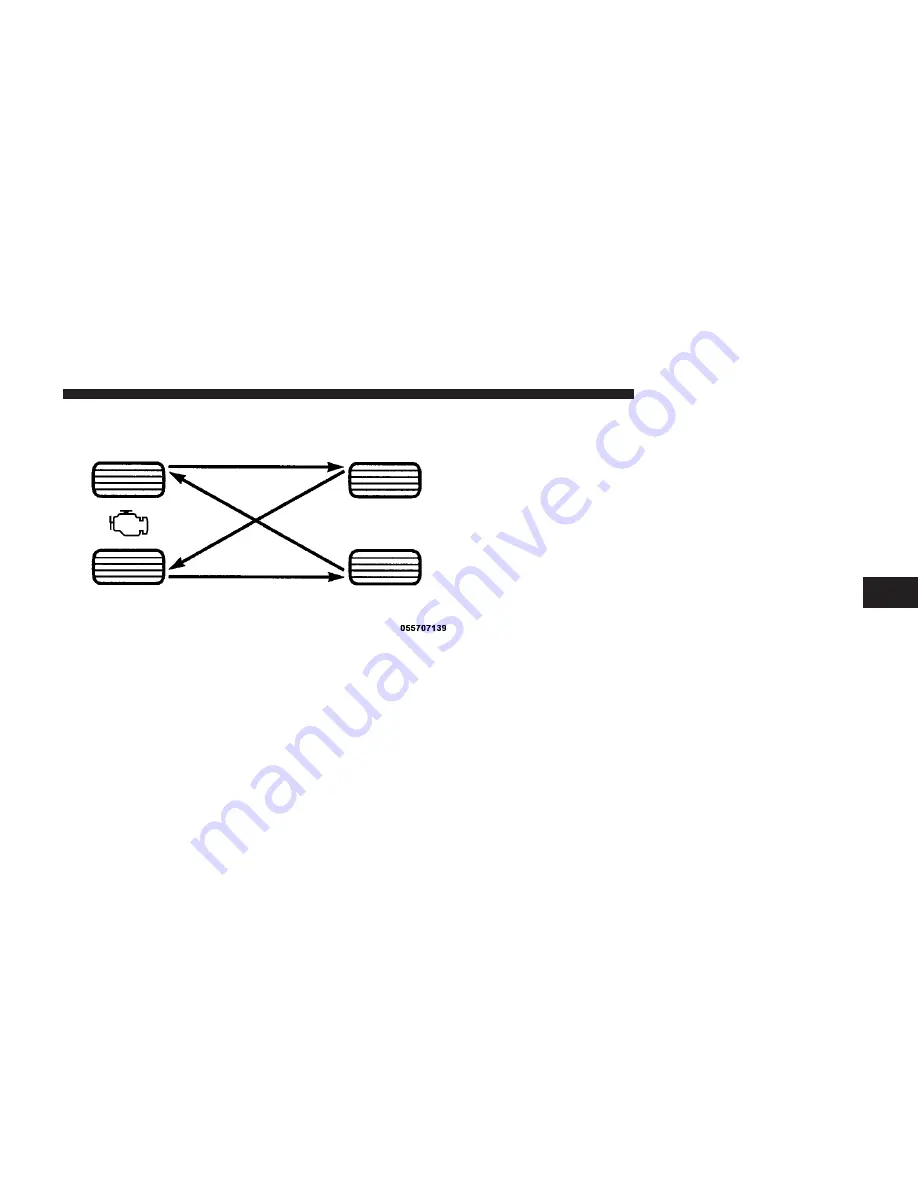
TIRE PRESSURE MONITORING SYSTEM (TPMS)
The Tire Pressure Monitor System (TPMS) will warn the
driver of a low tire pressure based on the vehicle recom-
mended cold placard pressure.
The tire pressure will vary with temperature by about
1 psi (6.9 kPa) for every 12°F (6.5°C). This means that
when the outside temperature decreases, the tire pressure
will decrease. Tire pressure should always be set based
on “cold inflation tire pressure”. This is defined as the tire
pressure after the vehicle has not been driven for at least
three hours, or driven less than 1 mile (1.6 km) after a
three hour period. The cold tire inflation pressure must
not exceed the maximum inflation pressure molded into
the tire sidewall. Refer to “Tires – General Information”
in “Starting and Operating” for information on how to
properly inflate the vehicle’s tires. The tire pressure will
also increase as the vehicle is driven - this is normal and
there should be no adjustment for this increased pres-
sure.
The TPMS will warn the driver of a low tire pressure if
the tire pressure falls below the low-pressure warning
limit for any reason, including low temperature effects, or
natural pressure loss through the tire.
Tire Rotation
5
STARTING AND OPERATING
357
Summary of Contents for 2012 Patriot Series
Page 1: ...Patriot O W N E R S M A N U A L 2 0 1 2 3 31 11 10 45 AM...
Page 4: ......
Page 8: ...6 INTRODUCTION...
Page 126: ...124 UNDERSTANDING THE FEATURES OF YOUR VEHICLE...
Page 127: ...3 UNDERSTANDING THE FEATURES OF YOUR VEHICLE 125...
Page 128: ...126 UNDERSTANDING THE FEATURES OF YOUR VEHICLE...
Page 194: ......
Page 199: ...INSTRUMENT CLUSTER 4 UNDERSTANDING YOUR INSTRUMENT PANEL 197...
Page 287: ...UNDERSTANDING YOUR INSTRUMENT PANEL 285...
Page 347: ...STARTING AND OPERATING 345...
Page 485: ...INDEX 10...
Page 505: ...Chrysler Group LLC 12MK74 126 AC 3rd Edition Printed in U S A...

